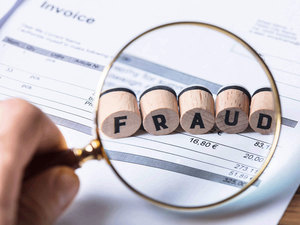The Reserve Bank of India (RBI) has introduced an innovative measure to bring relief to individuals grappling with unclaimed bank deposits. In August, the RBI launched a centralized platform called Unclaimed Deposits – Gateway to Access inforMation, or UDGAM. This initiative comes as a response to the difficulties faced by people in tracking down their forgotten bank deposits and aims to simplify the process by providing a unified solution.
The announcement of the UDGAM portal was made during the RBI’s monetary policy meeting on April 6, 2023. The main objective behind its establishment is to address the persistent challenges encountered by depositors in locating their unclaimed funds in various banks. By offering a consolidated platform, the RBI aims to streamline this process, making it more efficient and user-friendly.
The initial phase of the portal focuses on providing information about unclaimed deposits from a select group of seven banks. These banks include prominent names like State Bank of India, Punjab National Bank, Central Bank of India, Dhanlaxmi Bank, South Indian Bank, DBS Bank India, and Citibank. The phased approach allows these banks to gradually integrate their data with the UDGAM platform. The RBI has outlined its plan to extend this service to encompass all banks by October 15, 2023, as per an official statement.
Acknowledging the substantial sums of money involved, the RBI has taken proactive steps to assist individuals in locating their unclaimed deposits. As of the end of February 2023, public sector banks had transferred an impressive Rs 35,000 crore to the RBI as unclaimed deposits. These funds are securely held within the RBI’s Depositors’ Education and Awareness Fund (DEAF) and accrue interest at a simple rate determined by the RBI.
The notion of unclaimed deposits stems from bank accounts lying dormant and inactive, ultimately resulting in the transformation of these accounts into unclaimed deposits. This progression is marked by a series of stages. Initially, savings and current accounts become dormant when no transactions occur over a span of two years. Similarly, recurring and term deposits transition to a dormant state if they remain untouched for two years following maturity. The ultimate phase involves the transfer of funds to the DEAF as unclaimed deposits after a decade of account inactivity, irrespective of the account type.
In the previous paradigm, the task of locating unclaimed deposits necessitated navigating the websites of individual banks, a process often fraught with complications. This was particularly challenging in cases where the account holder had passed away, and family members were unaware of the existence of the deceased’s accounts. The UDGAM portal emerges as a transformative solution to this predicament. While its full efficacy will be demonstrated as more banks integrate with the portal, the initial steps of registration and login are straightforward.
The registration process entails entering a mobile number and a password. Upon submission of a One-Time Password (OTP) sent to the registered mobile number, the registration is completed. Interestingly, the mobile number of the individual whose unclaimed deposits are being sought is not required. This feature allows individuals to use their own mobile numbers to register on UDGAM and assist elderly family members in locating their unclaimed deposits.
Subsequent to the registration phase, users can log in to the portal. The search process involves entering the name of the account holder or joint account holder, selecting the relevant banks (or choosing ‘all banks’) from a dropdown menu, and providing one of several identification details such as PAN, voter ID, driving license number, passport number, date of birth, or address. Upon initiating the search, the results will display a list of banks where the account holder maintains accounts. Clicking on a bank’s name will redirect users to the bank’s official website, specifically to the ‘unclaimed deposits’ section. Here, users can access a comprehensive list of unclaimed accounts and gather further information about the procedures to claim the funds.
While the UDGAM portal is poised to revolutionize the search for unclaimed deposits, some experts offer insights for further improvement. Experts suggest that including the amount of the unclaimed deposit along with other details could enhance the user experience by providing a clear overview of the unclaimed funds. To bolster data security, there is need of the mandatory integration of Aadhaar authentication during registration to prevent unauthorized logins and fraudulent claims. Additionally, the inclusion of real-time updates to ensure that information on unclaimed deposits remains current.
However, the process doesn’t end once individuals obtain information about their unclaimed deposits through the UDGAM portal. Initiating claims with the relevant banks remains a significant challenge.
In summary, the introduction of the UDGAM portal by the RBI represents a significant step towards resolving the persistent issue of unclaimed deposits. By offering a centralized platform, the RBI is working to simplify the process for individuals seeking their unclaimed funds. While the current phase covers a select group of banks, future expansion promises to encompass a wider array of financial institutions. As the system matures, user feedback and expert recommendations will undoubtedly contribute to its evolution, ultimately ensuring a smoother and more efficient process for locating and claiming unclaimed deposits.








